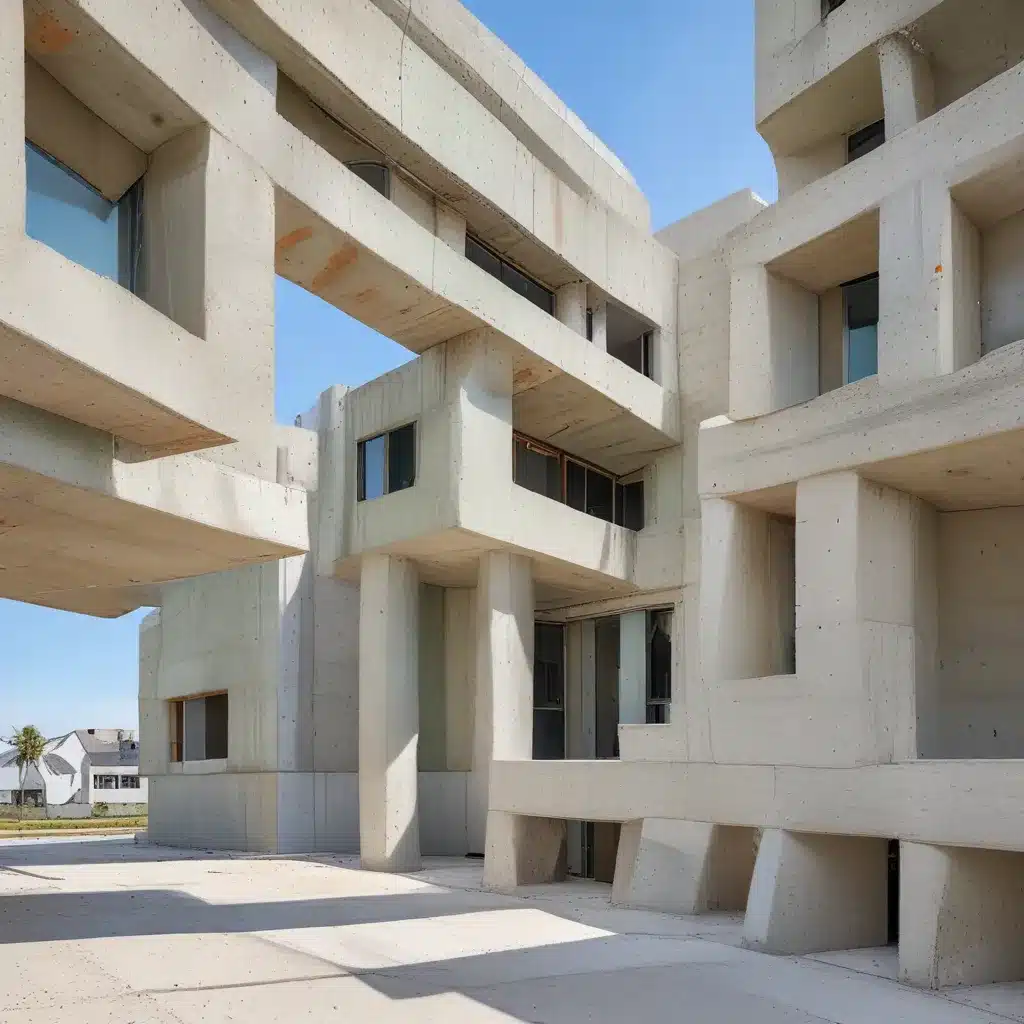
Rethinking an Industry’s Foundations
As a kid, I always marveled at the towering skyscrapers and sprawling cityscapes that defined the urban landscape. Little did I know that the very material holding these concrete giants together would one day take center stage in the fight against climate change. You see, the concrete industry is no stranger to innovation, but the stakes have never been higher.
Mechanization revolutionized construction decades ago, paving the way for earth-moving equipment and power tools that drastically reduced the time and labor required for large-scale projects. But now, the industry faces a new challenge – one that requires us to rethink the very foundations of our work.
Embracing Sustainable Solutions
The truth is, cement – the key ingredient in concrete – is a major contributor to global greenhouse gas emissions. In fact, the cement industry alone is responsible for about a quarter of all industrial CO2 emissions. That’s a sobering statistic, but it also presents a profound opportunity for innovation.
Innovative leaders in the industry are rising to the challenge, exploring a range of sustainable solutions that could reshape the future of construction. From alternative fuels and clinker substitution to carbon capture and storage, the possibilities are as diverse as they are promising.
One particularly exciting development is the emergence of carbon-cured concrete. This technology injects CO2 captured during cement production to accelerate the curing process and “lock in” the carbon. Current low-carbon cement technologies can sequester up to 5% of CO2, with the potential to reach 30% in the years to come. That’s a game-changer, folks.
Rethinking the Building Blocks
But the innovation doesn’t stop there. Increasingly, alternative building materials are catching the attention of architects, developers, and construction firms alike. Take cross-laminated timber (CLT), for example – a fire-resistant, large-dimensional building material made by gluing wooden panels and boards together.
Assuming a 10% replacement of concrete (and considering the CO2 captured in the wood has been accounted for), the use of CLT could reduce the overall cement footprint by 25%. And the best part? This natural, renewable material actually sequesters carbon, rather than just reducing emissions.
Other eco-friendly options like straw bales, rammed earth, and Hempcrete are also making waves in the industry, offering sustainable alternatives to traditional concrete and masonry. These materials not only reduce the carbon footprint of construction, but they can also improve occupant health and increase property value due to their superior energy efficiency.
Embracing the Digital Revolution
But the innovations don’t end there. The construction industry has also been riding the wave of the digital revolution, with technologies like Building Information Modeling (BIM) and cloud computing transforming the way we plan, design, and execute projects.
BIM, in particular, has proven to be a game-changer, allowing all project stakeholders to collaborate on a detailed 3D model that includes the functional systems of a structure. This collaborative process helps identify and resolve clashes and other errors before construction even begins, saving valuable resources and time.
And let’s not forget about the power of digital twins and digital as-builts – virtual replicas of physical assets that provide real-time data throughout the construction and maintenance phases. These digital tools can help owners make faster, more informed decisions about operational and maintenance costs, while also allowing for material and labor predictions during the construction process.
Overcoming Challenges
Of course, the path to a more sustainable construction industry is not without its challenges. Biomass supply, for example, can vary greatly by region, and other industries are also vying for these alternative fuels. Clinker substitutes, too, are limited, with natural pozzolans and industrial byproducts like fly ash and slag potentially becoming scarce as the power and steel industries decarbonize.
And then there’s the issue of cost. Many of the promising carbon-reduction technologies, like carbon capture and storage, are currently more expensive than traditional methods. This poses a dilemma for cement manufacturers, who face pressure from the public and financial investors to reduce emissions quickly, even if it doesn’t make economic sense in the short term.
A Greener Future on the Horizon
But despite these hurdles, the industry is rising to the challenge. Cement manufacturers are exploring innovative partnerships, rethinking their product portfolios, and embracing a shift in mindset. They’re recognizing that sustainability and profitability can go hand-in-hand, as the demand for greener construction solutions continues to grow.
In fact, here at Concrete R Town Ville, we’re leading the charge when it comes to sustainable construction practices. Our team of experts is constantly exploring the latest technologies and materials, working to reduce the carbon footprint of our projects and create a more resilient, eco-friendly built environment.
From carbon-cured concrete to innovative prefab and modular construction techniques, we’re committed to pushing the boundaries of what’s possible. And we’re not alone – across the industry, forward-thinking companies are embracing the challenge and charting a course towards a greener future.
So, as we look to the years ahead, I can’t help but feel a sense of excitement and optimism. The concrete industry may have been slow to adapt in the past, but now, it’s poised to lead the way in the fight against climate change. With a little imagination, a lot of hard work, and a deep commitment to sustainability, we can reimagine the very foundations of our built environment, ushering in a new era of green construction that will benefit us all.

